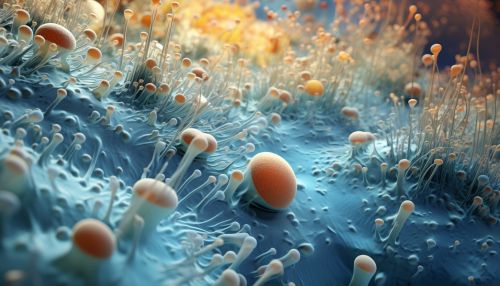Mechanisms of Biofilm Formation and Its Industrial Applications
Biofilm Formation: An Overview
A biofilm is a complex, structured community of microorganisms that are adhered to a surface and encased within a self-produced matrix of extracellular polymeric substances (EPS). The formation of a biofilm involves several stages, each characterized by distinct cellular behaviors and structural changes.
Initial Attachment
The first stage in biofilm formation is the initial attachment of planktonic (free-floating) microorganisms to a surface. This process is influenced by numerous factors, including the physicochemical properties of the surface and the surrounding environment, as well as the specific characteristics of the microorganisms themselves.


Microcolony Formation
Following initial attachment, the microorganisms begin to proliferate and form microcolonies. During this stage, the cells produce EPS, which serves to cement them to the surface and to each other. The EPS matrix also provides a protective barrier against environmental stresses, such as desiccation, shear forces, and antimicrobial agents.
Maturation and Detachment
As the biofilm matures, it develops a complex, three-dimensional structure with water channels that facilitate the diffusion of nutrients and waste products. Finally, some cells or clusters of cells may detach from the biofilm and disperse into the environment, potentially colonizing new surfaces.
Industrial Applications of Biofilms
Despite their often detrimental effects, biofilms also have numerous beneficial industrial applications. These include wastewater treatment, microbial fuel cells, and bioremediation.
Wastewater Treatment
In wastewater treatment plants, biofilms are used in the biological treatment process to remove organic matter, nitrogen, and phosphorus from the wastewater. The biofilm is formed on a support medium, such as sand or plastic, and the wastewater is passed over it. The microorganisms in the biofilm metabolize the pollutants, converting them into less harmful substances.
Microbial Fuel Cells
Microbial fuel cells (MFCs) are devices that use biofilms to convert chemical energy, usually from organic matter, into electrical energy. The biofilm, formed on the anode of the MFC, oxidizes the organic matter, releasing electrons that are then transferred to the anode and used to generate electricity.
Bioremediation
Biofilms are also used in bioremediation, a process that uses microorganisms to degrade or transform pollutants into less toxic or non-toxic substances. Biofilms are particularly effective in this regard due to their high microbial density and the protection provided by the EPS matrix, which can enhance the survival and activity of the microorganisms in contaminated environments.
